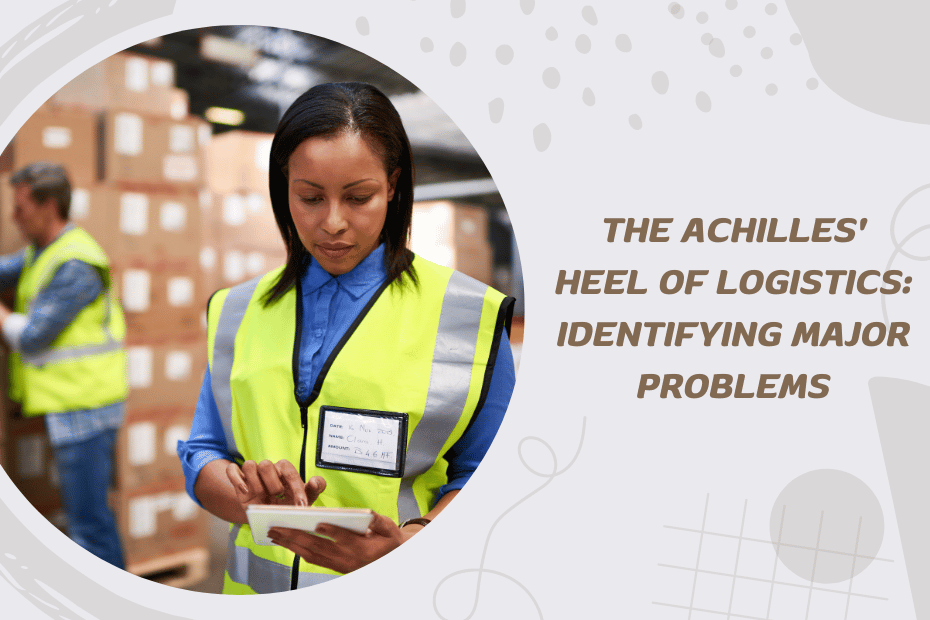Logistics is a critical function in any business that deals with the production and distribution of goods. It involves a complex network of processes that ensure products move smoothly from suppliers to customers. Despite its importance, logistics faces several significant challenges that can disrupt operations and impact a company’s bottom line. This article explores the major problems in logistics, highlighting their causes and providing insights into potential solutions to help businesses navigate these challenges effectively. By understanding these issues, companies can devise strategies to enhance efficiency, reduce costs, and improve customer satisfaction.
Rising Transportation Costs
One of the most significant challenges in logistics is the rising cost of transportation. Factors such as fluctuating fuel prices, driver shortages, and increased regulatory requirements contribute to these escalating costs. For instance, fuel costs account for a substantial portion of total trucking expenses, and unpredictable oil prices can severely impact logistics budgets. To mitigate these costs, companies can implement several strategies. Route optimization techniques leverage advanced software to identify the most efficient routes, reducing fuel consumption and travel time. Adopting environmentally friendly vehicles and alternative fuels can lower costs and enhance sustainability. Additionally, partnering with third-party logistics (3PL) providers can offer economies of scale, enabling businesses to share transportation resources and reduce individual expenses .
Investing in transportation management systems (TMS) can also help optimize delivery routes and reduce fuel consumption. These systems provide real-time tracking and data analysis, allowing logistics managers to make informed decisions about routes and transportation methods. For example, companies like FedEx and UPS have successfully used TMS to enhance their delivery efficiency and reduce costs. Exploring alternative transportation methods such as intermodal transport can further reduce costs by combining the strengths of different transportation modes, such as rail and truck, to achieve more cost-effective and efficient logistics solutions.
Technological Integration and Cybersecurity
Integrating new technologies into logistics operations presents both opportunities and challenges. Technologies such as artificial intelligence (AI), blockchain, and the Internet of Things (IoT) can enhance efficiency and visibility across the supply chain. However, implementing these technologies requires significant investment and careful planning. AI can improve demand forecasting and route optimization, while blockchain can provide secure and transparent transaction records, reducing the risk of fraud and errors .
However, the adoption of these technologies also introduces cybersecurity risks. Ensuring the security of logistics data is crucial, as breaches can lead to significant disruptions and financial losses. Companies must invest in robust cybersecurity measures, including firewalls, encryption, and regular security audits, to protect their logistics systems from cyber threats . Additionally, leveraging advanced technologies like digital twins and robotics can further optimize logistics operations. Digital twins create virtual replicas of physical assets, processes, or systems, allowing for real-time monitoring and analysis. Robotics can automate repetitive tasks in warehouses, improving efficiency and reducing labor costs. Companies like Amazon have successfully integrated robotics into their fulfillment centers, enhancing productivity and accuracy in order processing.
Workforce Shortages
The logistics industry is experiencing a critical shortage of skilled labor, particularly truck drivers and warehouse workers. This shortage is exacerbated by an aging workforce and the industry’s inability to attract younger workers. According to the American Trucking Associations (ATA), the trucking industry faced a shortage of over 60,000 drivers in 2018, a number expected to grow in the coming years. To address this issue, companies can invest in recruitment and training programs, offer competitive wages and benefits, and leverage automation and robotics to reduce reliance on human labor.
Creating a positive work environment and providing opportunities for career advancement can also help attract and retain talent. For instance, offering flexible work arrangements and promoting work-life balance can enhance employee satisfaction and retention. Additionally, companies can collaborate with educational institutions to develop specialized training programs that prepare individuals for careers in logistics. By fostering a supportive and inclusive work environment, logistics companies can mitigate the impact of labor shortages and maintain high operational standards.
Regulatory Compliance
Navigating the complex landscape of local, national, and international regulations is another significant challenge for logistics companies. Compliance with regulations such as hours-of-service (HOS) rules for drivers, environmental regulations, and customs requirements can be daunting and costly. Non-compliance can result in hefty fines, operational disruptions, and damage to a company’s reputation. To ensure compliance, companies must stay informed about regulatory changes, invest in compliance management systems, and provide regular training for their staff.
Implementing an integrated compliance management system can streamline the process and provide a centralized platform for monitoring and reporting compliance activities. This system can help identify potential risks and ensure that all aspects of the logistics operation meet regulatory standards. Additionally, engaging with industry associations and participating in regulatory forums can provide valuable insights into upcoming changes and best practices for compliance. By adopting a proactive approach to regulatory compliance, logistics companies can minimize risks and maintain operational continuity.
Supply Chain Visibility
Ensuring end-to-end visibility across the supply chain is crucial for making informed decisions and responding swiftly to disruptions. Poor visibility can lead to inefficiencies, increased costs, and missed opportunities. Advanced tracking systems and visibility tools, such as IoT devices and real-time data analytics, can provide real-time insights into the location and status of shipments, enhancing coordination and reducing uncertainties.
Technologies such as digital twins and IoT devices enable real-time monitoring and analysis, helping companies anticipate and mitigate potential disruptions. Improved supply chain visibility leads to better inventory management, optimized operations, and increased customer satisfaction. For example, IoT devices can track the condition and location of goods in transit, providing real-time updates to logistics managers. This information allows for timely interventions in case of delays or issues, ensuring that goods reach their destination on time and in good condition. Additionally, integrating supply chain visibility tools with other systems such as warehouse management and transportation management systems can provide a holistic view of operations, enabling more effective decision-making and resource allocation.
Sustainability Pressures
Sustainability is becoming a critical focus in logistics as companies face increasing pressure to reduce their environmental impact. Implementing sustainable practices involves using eco-friendly vehicles, optimizing delivery routes, and adopting green packaging solutions. Companies can also invest in renewable energy sources and energy-efficient technologies to reduce their carbon footprint.
Balancing sustainability with operational efficiency and profitability is challenging, but essential for meeting regulatory requirements and satisfying environmentally conscious consumers. For instance, logistics companies can adopt electric or hybrid vehicles to reduce emissions and fuel consumption. Additionally, optimizing delivery routes through advanced route planning software can minimize fuel usage and reduce the overall environmental impact. Implementing sustainable packaging solutions, such as biodegradable materials or reusable packaging, can further enhance a company’s sustainability efforts. By prioritizing sustainability, logistics companies can not only meet regulatory standards but also attract eco-conscious customers and improve their market reputation.
Data Management and Integration
Managing and integrating vast amounts of data from various sources is a complex challenge in logistics. Accurate and consistent data is essential for effective decision-making, inventory management, and demand forecasting. However, data silos, where information is stored in separate systems that do not communicate with each other, can hinder these processes.
Investing in integrated data management solutions, such as cloud-based systems and predictive analytics, can help companies manage data more efficiently, improve collaboration across departments, and enhance overall logistics operations. For example, integrating data from warehouse management systems, transportation management systems, and order management systems can provide a comprehensive view of logistics operations. This integration enables better coordination, reduces errors, and improves overall efficiency. Additionally, using predictive analytics can help identify trends and patterns in logistics data, allowing companies to make proactive decisions and optimize their operations.
In Conclusion
The logistics industry faces numerous challenges, from rising transportation costs and workforce shortages to regulatory compliance and sustainability pressures. Addressing these issues requires a strategic approach that leverages advanced technologies, invests in workforce development, and prioritizes sustainability. By implementing effective solutions and continuously adapting to the changing landscape, logistics companies can overcome these obstacles and achieve operational excellence. For further insights and strategies, exploring resources from industry experts and staying updated with the latest technological advancements can provide valuable guidance in navigating the logistics landscape.










